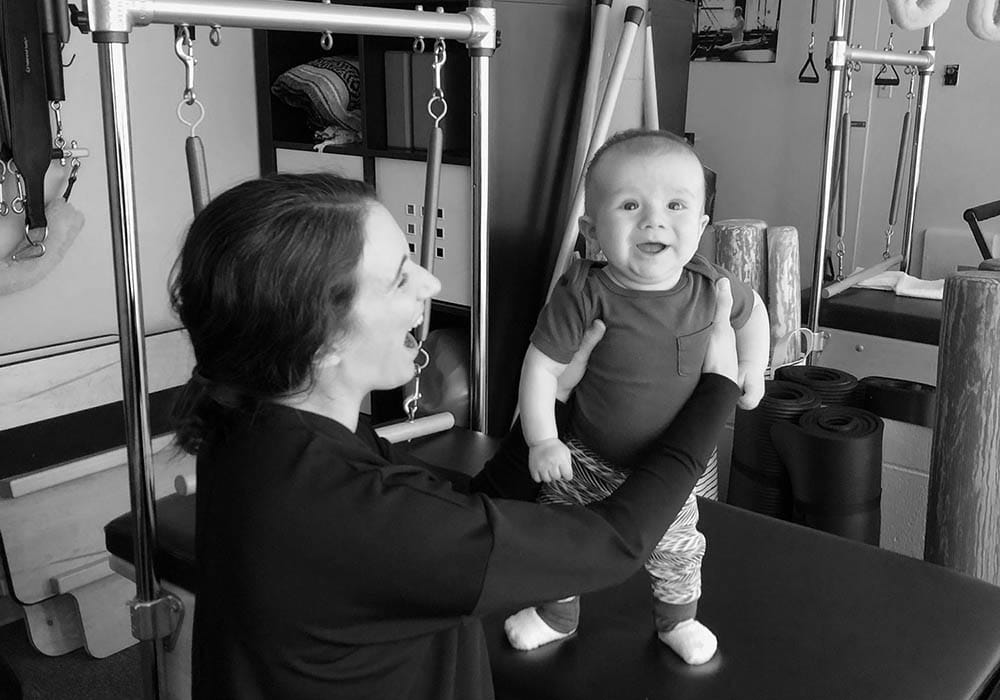
Ok, now that you are over the cuteness of my kid (yes I’m slightly biased!) let’s talk about this idea of “getting it right” when it comes to movement. Watching my son who now is just about 8 months old (he was about 6 months old in the picture above) move around with such curiosity, ease and joy has further solidified my belief that we are not just inherently designed to move, but move well and ENJOY it! Levi, my bouncing boy, has no preconceived notion of right or wrong when it comes to movement. He simply balances that giant head on his tiny body while twisting, rolling and scooting toward whatever he wants and finds interesting.
I’m fully aware that little babies are much different creatures than adults. Their bones are slightly squishy, they have drastically different proportions and have yet to fully develop their spinal curves that make biped locomotion possible. With all of that said, it’s the impetus behind their movement that capitivates me. Levi is simply tickled when he learns a new skill, finds he can twist in a new way and literally squeals with delight looking at the way his chubby fingers and toes articulate. Moving literally is exploration for him. When do we lose this?
Looking at my teaching I have become careful not to label movement strategies and positions as “right” or “wrong”. I prefer to teach that there are simply choices. No movement is bad, but certain strategies will lead to certain outcomes. For example: if every time you aim to extend your hip joint you unconsciously extend your lumbar spine in the process, back pain might follow. This is the role of a trained instructor: to guide your strategies so you have the knowledge, strength and flexibility to make the best choice for your body to move through space well and pain free. So, instead of being conerned with “right” or “correct”(which to me suggest a pull toward external validation from said instructor) what if we changed our goal to one of a more inquisitive and experiential nature. The goal being simply to pay attention to how something feels, pay attention to the relationship of cause and effect in the body and pay attention to the process of moving rather than the goal of a “perfect” static posture.
Yes, with this type of inquiry there are more unknowns, fewer rules and greater potential for play. It may seem easier to work in within a model where something is either completely right or wrong, but seldom does the human body exist in a totally binary world. When my body is here it’s right, when its here it’s wrong. What fun is that?!?!?
The longer I teach the more I am humbled. The things that I felt were unquestionably true when I first started teaching are often challenged by the body in front of me. That is part of the reason I love this work. It keeps us engaged, learning and growing. It is a practice, not a means to any given destination or finish line. A process of learning about oneself at each stage of ones life.
So the next time your do an ab curl or a bridge maybe break the rules a bit. Play. Swim around in the form of an exercise until your find something tasty and juicy. You don’t need to be a expert in anatomy or biochmeics. Levi surely isn’t. Learn to feel, learn to pay attention to yourself. And maybe squeal like my kid in the process. Why not?!?
With Love,
Josselyn
